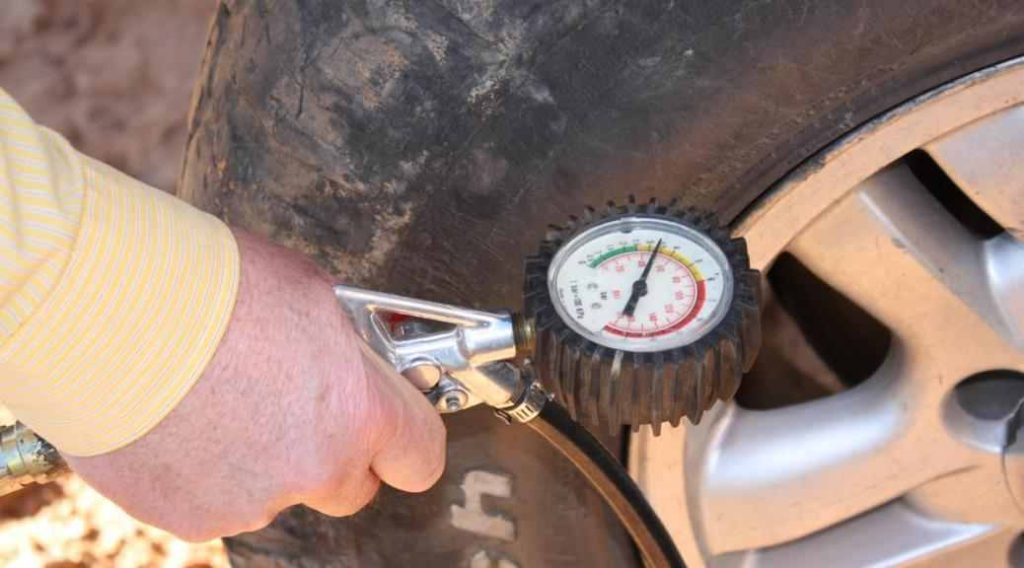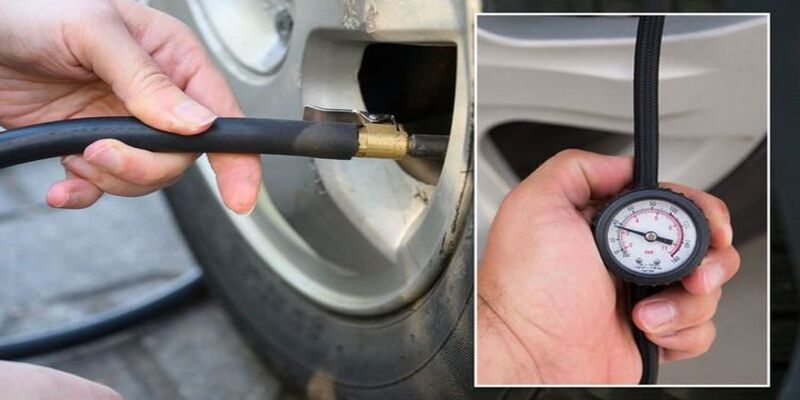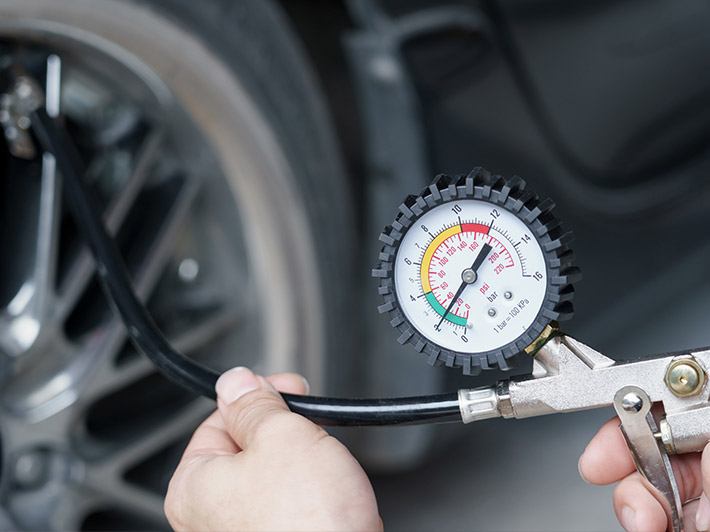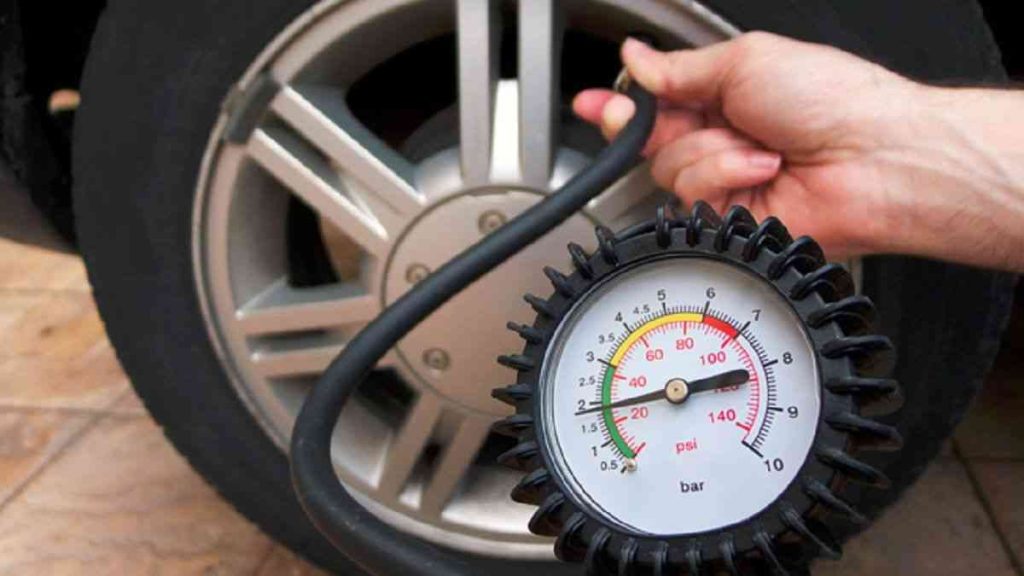Driving a car is a daily activity for many people. Everyone wants to keep their car safe and in good condition. There are several factors that need to be considered to ensure the safety and longevity of the vehicle. One such crucial aspect is tyre pressure. Tyre pressure is not something that many people pay attention to, but ignoring it can have severe consequences.
Ignoring the tyre pressure can lead you to an unwanted situation. If the pressure is too low, it can cause the tyre to wear out faster and affect the car’s handling. It can also lead to uneven wear on the tyre, reducing its life, and increasing the risk of a blowout. On the other hand, if the tyre pressure is too high, it can cause the tyre to be less flexible, resulting in a bumpy ride and reduced traction on the road, making it difficult to stop quickly in an emergency.
Therefore, it is essential to check the tyre pressure regularly to avoid any potential risks. Regular checks can help ensure that the tyre pressure is at the recommended level, which is not only beneficial for the tyre but also for the overall safety of the vehicle. Proper car tyre pressure ensures better fuel economy, improved handling, and extended tyre life.
In this article, we will discuss how often you should check your car tyre pressure and the factors that can affect tyre pressure. We will also provide some tips on how to check the tyre pressure and how to maintain it correctly.
What is Car Tyre Pressure?
Car tyre pressure is the amount of air in your car’s tyres. Car tyre pressure is measured in pounds per square inch (PSI). The recommended tyre pressure for your car can be found in your vehicle owner’s manual or on a sticker located in the driver’s door jamb.
The recommended tyre pressure can vary depending on the car’s make and model, the type of tyre, and the load capacity.
Why is it important to check your car tyre pressure regularly?
Maintaining proper car tyre pressure is crucial for several reasons. Overinflated or underinflated tyres can cause poor fuel economy and affect your car’s mileage. It can lead to uneven wear on your car tyres that can reduce their life.
Underinflated tyres can cause poor handling and make it difficult to control your car. Lastly, overinflated tyres can lead to a higher risk of blowout and increase the chances of an accident on the road.
How often should you check your car tyre pressure?
As per the expert’s recommendation, you should check your car tyre pressure at least once a month or before any long trip. It’s also essential to check your tyre pressure after a sudden temperature change, such as in extreme weather conditions or if you’ve just driven a long distance.
You should also check your car tyre pressure if you notice any changes in your car’s handling or if your tyre pressure warning light turns on.
How to check your car tyre pressure?

Checking your car tyre pressure is a simple process that can be done at home or at a petrol station. Here’s how to check your car tyre pressure:
Ensure that your car tyres are cold. It’s best to check your tyre pressure before you start driving or at least 3 hours after your car has been parked.
Remove the valve cap from your car tyre.
Place the tyre pressure gauge on the valve stem and press down firmly until you hear a hissing sound. This means that you’ve taken the reading. You can buy the recommended tyre pressure gauge for your ease.
Read the air pressure gauge. If the air pressure is lower than the recommended tyre pressure then add the air. If it’s higher, release some air until you reach the recommended pressure.
Replace the valve cap and repeat the process the same process for the other tyres of your car.
Conclusion
Checking your car tyre pressure regularly is crucial for maintaining your car’s safety and performance. It’s recommended to check your car tyre pressure at least once a month, before going on any long trip, and after sudden temperature changes.
Checking your car tyre pressure is a simple process that can be done at home or at a petrol station. By doing this, you’ll ensure better fuel economy, improved handling, and extended tyre life, saving you time and money in the long run.
Remember, prevention is always better than cure, and checking your car tyre pressure regularly is a simple step towards ensuring your car’s longevity and safety on the road.
FAQs
How do I know what the recommended tyre pressure is for my car?
The recommended tyre pressure for your car can be found in your vehicle owner’s manual or on a sticker located in the driver’s door jamb. It’s important to follow the recommended tyre pressure to ensure optimal performance and safety of your car.
Can I check my car tyre pressure when the tyres are warm?
It’s recommended to check your car tyre pressure when the tyres are cold. Warm tyres can give a false reading due to the increased pressure from the heat generated while driving. It’s best to wait at least 3 hours after driving or check your car tyre pressure before starting your car.
How do I know if my car tyres are overinflated or underinflated?
You can check if your car tyres are overinflated or underinflated by using a tyre pressure gauge. If the reading is higher than the recommended tyre pressure, it means your tyres are overinflated, and if the reading is lower, it means your tyres are underinflated. You can also look for signs of uneven wear on your tyres, which can indicate incorrect tyre pressure.
Can overinflated or underinflated tyres affect my car’s fuel economy?
Yes, overinflated or underinflated tyres can cause poor fuel economy, affecting your car’s mileage. Overinflated tyres can cause increased rolling resistance, while underinflated tyres can cause increased friction, both of which can reduce your car’s fuel efficiency.
How can checking my car tyre pressure save me money?
By maintaining proper car tyre pressure, you can save money in the long run by improving your car’s fuel economy, extending your tyre life, and preventing any potential accidents or damages that may result from incorrect tyre pressure.


